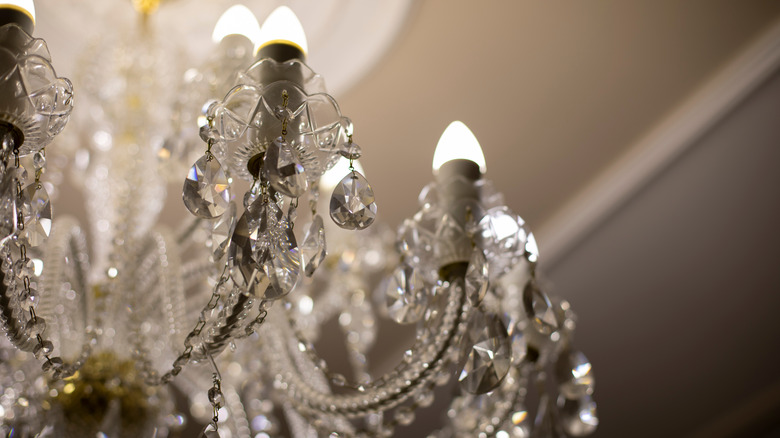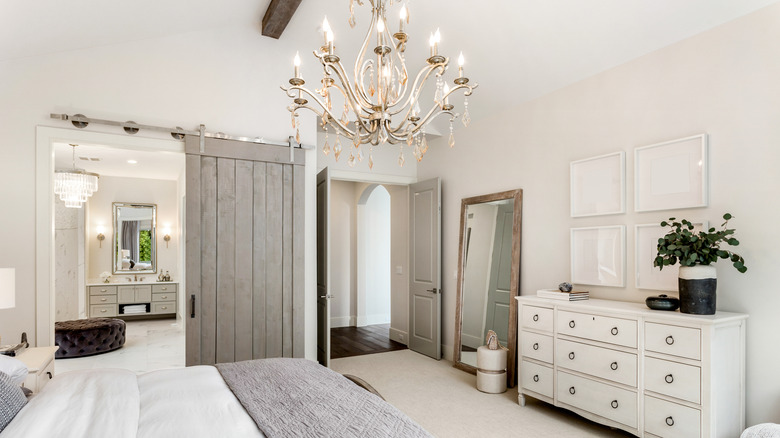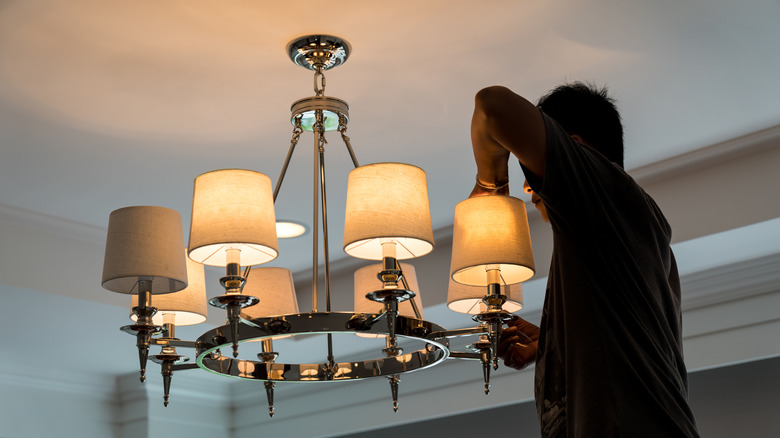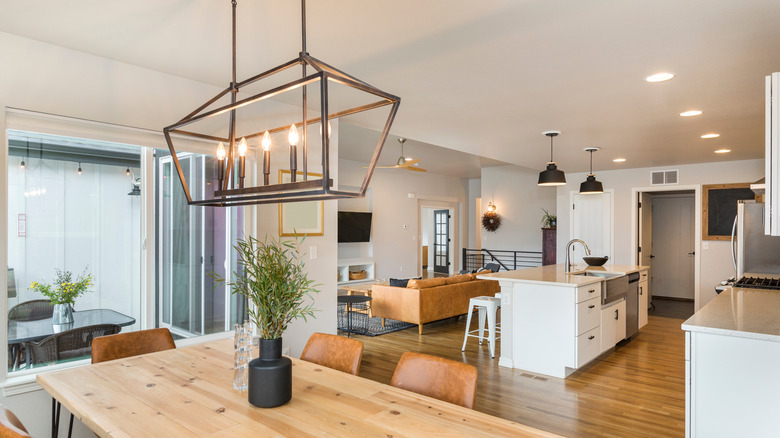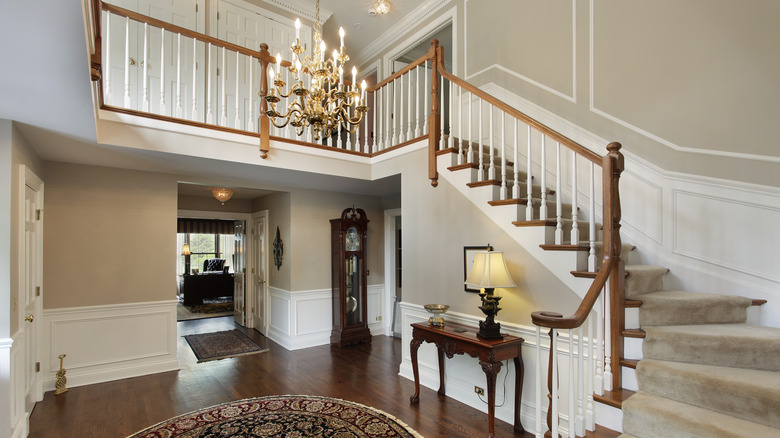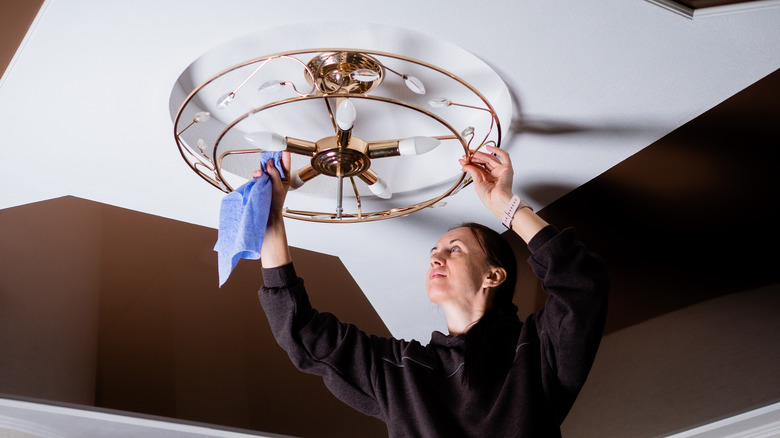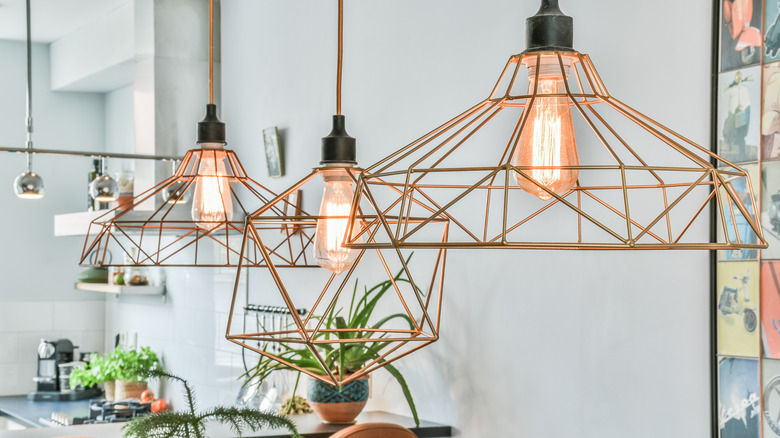Mistakes Everyone Makes When Buying A Chandelier
A chandelier is a luxury light fixture that is usually seen as only suitable for large mansions, but it can actually be a great fit for any home. This form of decorative lighting can dazzle any space and create an elegant atmosphere wherever you choose to hang it. They also light the space evenly and won't take up much space since they hang from the ceiling. Moden chandelier styles have gone beyond the standard designs that are found in hotels and old houses, and can now be sleek and simple enough to fit whatever plan you have for your room.
While chandeliers are versatile, there are still a lot of factors to consider when buying one. The type, size, amount of light it produces, and how it's maintained are just some of the areas people make mistakes. For example, a chandelier shouldn't be installed so low that the light causes glare or obstructs views, advises The Lighting Company. Here are some other common mistakes to watch out for when buying a chandelier.
Not selecting the right light output
The amount of light a chandelier emits is the most important consideration. Before buying one, you have to think about what type of light is needed and how much. Ask yourself what kind of ambiance you're looking to create — is this an area for relaxing, socializing, or studying? The purpose of the room will determine what kind of chandelier you should purchase and if it will be the only source of light. Bellacor suggests a chandelier with a dimmer, which allows you to control the output and set the tone of the room.
Not choosing the right size
The size, shape, and weight of a chandelier should be based on your ceiling space. The Lighting Company provides a handy guide: If your ceiling is below 7 feet high, it might be difficult to include a chandelier unless it is installed over a table; if the ceiling is 8 to 9 feet, you should ensure a distance of about 6 to 7 feet between the chandelier and the ground; ceilings of 10 feet or above, you have the luxury of a chandelier that will hang 2 to 3 feet down.
Choosing the wrong type
Chandelier types are divided by style, shape, and design, and should fit the theme of your space. The most common styles are traditional, tiered, and crystal. Traditional is constructed with all the lights on one level, while tiered has multiple layers. Crystal is the most recognizable style and has pendants attached. You can find many design types including modern, contemporary, and industrial, notes YLighting. You can opt for an LED chandelier, which saves energy. These also tend to last longer and give you the option to switch between color temperatures.
Choosing the wrong design
The type of chandelier you choose needs to fit the overall design of your space. According to Inviting Home, extravagant lighting from the entrance to the dining area will wow your guests, so you can go all out with the sparkles and shine. Spaces like the foyer and staircases can incorporate either bold or subtle chandeliers, depending on the look you're going for. On the other hand, your bathroom or sleeping area might need a more calming light setup that ties the space together without demanding too much attention.
Lack of maintenance
Chandeliers need to be cleaned carefully since they are delicate. Turn off the chandelier before you start cleaning, and use a ladder or stool that is safe to stand on. Bellacor recommends wiping off the dust with a cloth while wearing cotton gloves and using a specific cleaning solution to work on difficult stains. Avoid using water or regular household cleaning products on your chandelier to prevent watermarks. Dust your chandelier weekly and do a thorough clean and check annually or biannually to see if everything is intact and if any parts need to be replaced.
Not replacing broken parts
It's common for chandelier bulbs and other parts to break or fall off. Depending on the height of your ceiling, changing the bulbs might be easy if they're not too hard to reach. Otherwise, you'd need a winch, which is a remote-controlled instrument that can lower and lift the chandelier safely. When you need a replacement, ChandelierParts suggests quickly identifying and replacing the specific part that is broken and being open to getting a different part if your chandelier is really old or rare.
